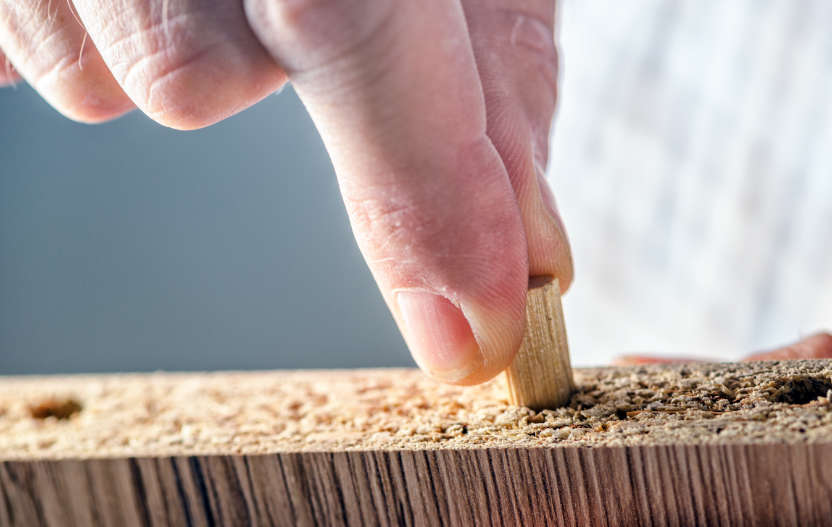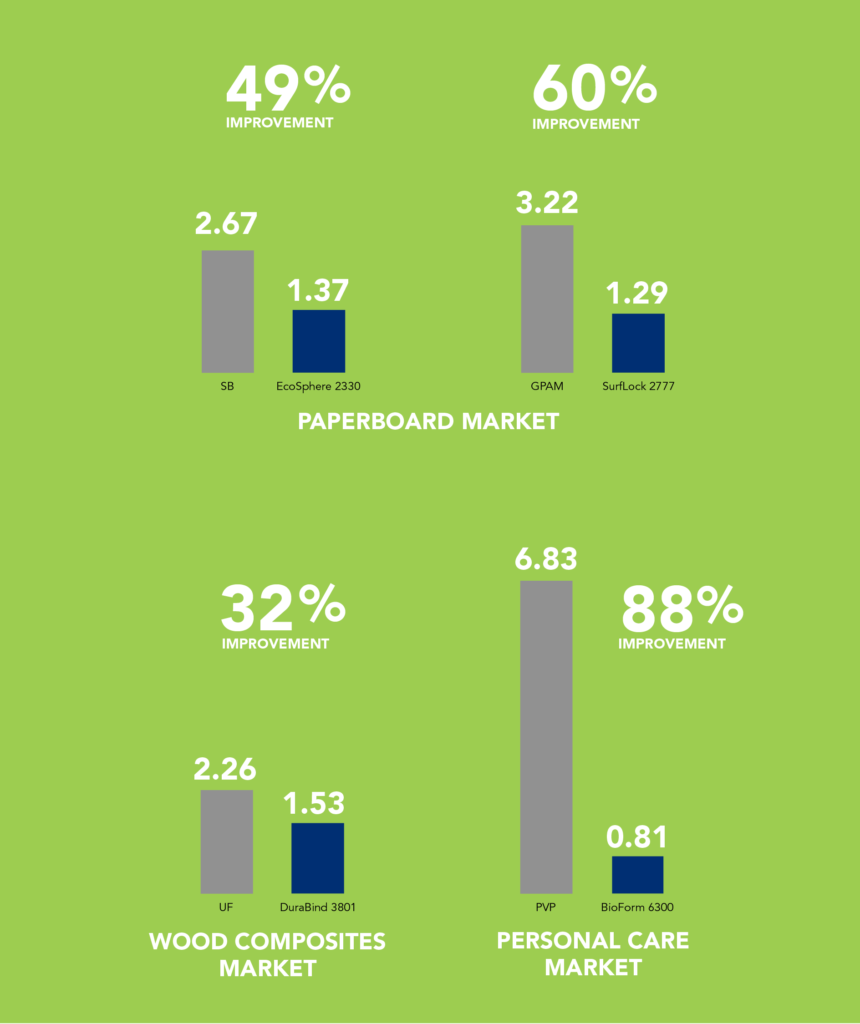
We’ve held the same fundamental beliefs since our founding: the first is that the world needs to reduce its dependence on oil, and second, that sustainable products can work just as well and don’t have to cost more.
Our commitment to sustainability and our focus on creating products that meet at the intersection of performance, economics and sustainability – these are the things that allow us to create value for customers.

We aim to embed environmental stewardship in all aspects of our business. Our “Carbon Commitment” calls for “carbon footprint reductions enabled by the use of our products by our customers that target to avoid 100% of the carbon emissions associated with our business, which would result in a 1:1 carbon cover and would result in EcoSynthetix being climate positive”. We believe we can achieve our mid-term goal to have a 1.5:1 carbon cover by 2027, meaning that carbon footprint reductions enabled by the use of our products by our customers should avoid 150% of the carbon emissions associated with our business.
Internal carbon emissions are measured based on scope 1, 2, and 3 level emissions as defined by the GHG Protocol. We have also committed to innovation and developing new products which will have a positive impact on the planet and our stakeholders. Our product development efforts focus on sustainable chemistries which can be produced by manufacturing processes adhering to the 12 Principles of Green Chemistry where the customer value proposition is strong and commercial success will benefit the planet and our stakeholders.

Green chemistry is the design of chemical products and processes that reduce or eliminate the use or generation of hazardous substances. Green chemistry applies across the life cycle of a chemical product, including its design, manufacture, use, and ultimate disposal.
Polymers that are made from biomaterials or renewable content do not necessarily have a small environmental footprint. It can be a challenge for companies to adopt even a few of these principles. But given our commitment to sustainability, we’ve been able to adopt all 12. We use the 12 Principles of Green Chemistry to ensure that not only the feedstocks we use are sustainable, but our processes and production methods all improve safety and reduce our environmental footprint.

Our biopolymers are derived from the fundamental re-engineering of natural-based feedstocks, such as starch (biogenic carbon) into biopolymer nanoparticles using a continuous manufacturing process. Products derived from natural-based feedstocks and industrial solutions utilizing renewable materials have a significantly lower carbon footprint as compared with products and solutions derived from petroleum-based chemicals. Our biopolymers also contain no toxic monomers or volatile organic compounds (VOCs) and are biodegradable. As illustrated below, our biopolymers can provide significant benefits to a manufacturer’s impact on the environment in the Company’s target markets.

In the paper and paperboard market, the cradle-to-gate emissions of synthetic incumbents are estimated at 2.67 kilograms of carbon dioxide equivalent per kilogram of dry product for styrene butadiene (“SB”). These emissions can be compared to an estimated cradle-to-gate emissions of 1.37 kilogram of carbon dioxide equivalent per kilogram of dry EcoSphere® biolatex® binder, which is an improvement of 49%. This carbon footprint includes both embedded carbon of fossil-fuel origin, released to the atmosphere when the product decomposes, and emissions associated with manufacturing and transporting raw materials.
In the paperboard market, substitution of GPAM with SurfLock™ FSE lowers the estimated cradle-to-gate material carbon footprint from 3.22 to 1.29 kilograms of carbon dioxide equivalent per kilogram of dry product, which is an improvement of 60%.
In the wood composites market, substitution of urea formaldehyde with a DuraBind™ resin lowers the estimated material carbon footprint from 2.26 to 1.53 kilograms of carbon dioxide equivalent per kilogram of dry product, which is an improvement of 32%.
In the personal care market, substitution of PVP with Bioform™ lowers the estimated cradle-to-gate material carbon footprint from 6.83 to 0.81 kilograms of carbon dioxide equivalent per kilogram of dry product, which is an improvement of 88%.
This certification sets out the criteria for an environmental management
system, which we have established and have followed within our daily
operations since 2011. It maps out a framework that we follow to ensure
our environmental management systems and processes are best-in-class and
meet strict standards.